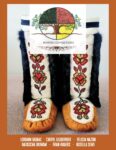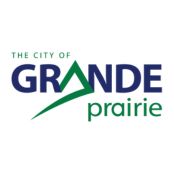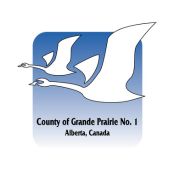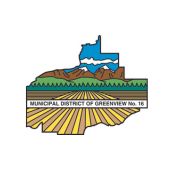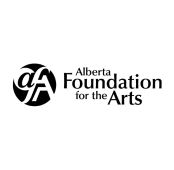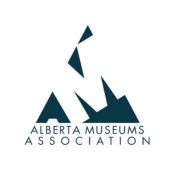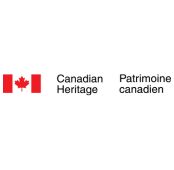Rooted Connections
Rooted Connections

The exhibition, Rooted Connections tells a story. Storytelling is a way in Indigenous communities to pass down, teachings, traditions and language from generation to generation. The importance of learning how to hunt and tan hide, how to sew different patterns with beads, or how to play drums and rattles are shown here in this display. You will journey through the various cultures and teachings these artisans wanted to represent in their Indigenous heritage.
Through storyboard displays, Loriann Gignac shows us the importance of hunting and the fur trade within the Indigenous community. Indigenous peoples are very respectful of nature and are taught that animals are gifts. Everything in creation was made and created for a purpose, and each living thing on earth has a place in the circle of life. The Indigenous peoples believe that the animals were given to us as a gift to feed, clothe us, and give us everything we need to survive. In this display, we also see Innuit carvings and tools, given to us by Cheryl Leguerrier to showcase her culture. Soapstone carving is a traditional form of artwork in the Innuit culture. Also, the tools are called Ulus from Inuvik, handmade by her grandfather Lazarus Lester, these tools are used to skin the hide and blubber off animals and whales.
Beading on hide and fabric is one of the oldest forms of Indigenous artistry. Its intricate beauty is displayed here when you look at Fran Chowace Rogers and Rosella Sewi’s beadwork. At least 8,000 years before Europeans came to Canada, First Nations people were using beads in elaborate designs and for trade. A form of clothing that is well-known in the Indigenous community is the poncho. Seen in Felicia Nazon’s piece, her work showcases the detail and design work created to represent her culture. Colors and patterns are very important and symbolize different meanings in Indigenous groups. For example, the Regalia figures on display created by Natasha Okimaw, represent different dances and the attire her community would wear during a Pow-Wow or Ceremony.
As you may have noticed, the above image Loriann created to represent this exhibition has the Tree, the Tree Roots, and the Sacred Circle. The tree represents continual growth. We are capable of change and learning throughout our life. The tree is symbolic of that idea. The roots represent all the directions in ways we connect and support one another within our community. The circle is a universal symbol of connection, unity, harmony, wholeness, and eternity. The Sacred Circle represents the four States of Being, the four Sacred Medicines, the four Seasons, the four Elements, and the four Stages of Life.
Co-Curated by Loriann Gignac and Jamie-Lee Cormier for the Grande Prairie Public School District
Featured Image: Rosella Sewi, Beaded Flower Moccasins, Tanned hide, fur, glass beads and cotton fabric, Collection of the artist
Featured Artists
Loriann Gignac
Loriann Gignac identifies as a Cree/ Métis woman from Sturgeon Lake First Nation Band in Treaty Six Territory from Northern Saskatchewan. Loriann has resided in the Grande Prairie area for over forty-three years.
Loriann is a mother and a grandmother. She works as an Indigenous Liaison for the Grande Prairie Public School Division. She feels that education is the key to success and opportunity.
Loriann is an active board member of the Grande Prairie Traditional Paths Society. Traditional Paths Society’s mission statement encourages the traditional creative expression of First Peoples culture in the community. An active and healthy relationship with culture strengthens identity, builds resilience, and provides opportunities to connect with people.
For a long time, Loriann struggled with what being Indigenous meant. Integrating Indigenous Ways of Knowing into her life is where her healing journey began. Embracing her Indigenous culture opened a lifelong path of exploring opportunities to interact and connect with the community. Loriann’s passions are being creative, and sharing her knowledge and gifts of art pieces, it brings her joy and content. Loriann is inspired by the numerous forms of Indigenous crafting, ways of knowing, and how they impact the healing journey, individually and as a community.
Through creative artwork, our stories became our medicine. When we didn’t have a written language, we had art to express ourselves. Our songs, music, dance, and art created a map for us to follow. As Indigenous people, we understand there is a tremendous responsibility when we create art. We are not just making it for ourselves, we are narrating our history, illuminating our stories, and recording the journey of our souls. Our art is embedded with instructions from our ancestors. It helps us to understand how the world came to be and guides us through the complexities of life.
Cheryl LeGuerrier
Bio Not Available
Felicia Nazon
Felicia Nazon grew up in Inuvik, NWT and she was born into the Gwich’in Nation. She currently lives in Sexsmith, Alberta with her family and works full time as a Network Administrator for Fujitsu Canada. She has attended schools across Canada and completed her Network Administration Diploma at NAIT. In 2006, Felicia moved to Grande Prairie, AB and worked as a Network Computer Technician in the Oil Field Services.
As a child, her mother Rosemary Nazon would sew traditional clothing for family and friends. By helping her mother with tasks like cutting out patterns, Felicia would learn how to work with different shapes and pieces that make up a garment. Preparing bias tape and using it in delta braiding would teach her how to create and apply decorative edging and trims. These activities would give her practical experience in the fundamental techniques used in sewing.
They crafted everything from ceremonial attire to ready-to-wear clothing. Sewing has been a significant aspect of her existence. She recalls observing her mother for endless hours as she fashioned exquisite traditional attire, practicing her own skills to one day do the same.
Every item she crafts is tailored specifically for the customer. She produces a diverse array of products, including parka covers, mukluks, jackets, moccasins, and various traditional accessories. For Nazon, the joy of creating exquisite and significant pieces brings profound contentment and tranquility.
Over the years Felicia has been dedicated to preserving the art of traditional sewing by actively learning and incorporating various sewing methods. This continuous learning process not only helps keep historical techniques alive but also allows for innovation within the craft, ensuring its relevance and adaptability over time.
“Each generation has a new perspective to add to the continued development of textile designs within Indigenous communities. Seeing our traditions worn with pride brings a great sense of reconnection to our culture.”
It was a result of this commitment to preserving traditional sewing techniques that Nazon began a personal project to document the traditional style of delta braiding. Delta braiding is a form of modern-day quilting. This textile was often used to embellish traditional clothing with the use of a quilting technique that folds bias tape into different unique designs and patterns. Her Mother Rose Mary Nazon passed away in 2000 and Felicia Nazon has since taught herself these techniques from the memories of watching her mother create these designs and patterns. Each family in the region would usually create their own styles. (Similar to the plaids that traditional Scottish people would use to identify other clans) From this deep connection to her mother. She feels that it is very important to keep traditional sewing alive because it is part of our past and its part of our identity. Teaching our youth about traditional lifestyle is vital to our future, the retention and healing of our communities.
Natascha Okimaw
Natascha Okimaw is a Cree woman from Treaty 8 territory and mother to 3. She has grown up in the Friendship Centre movement since the age of 8 and has been working for the Grande Prairie Friendship Centre for over 16 years. She is currently the Cultural Navigator for the Northern Indigenous Health Alliance, Program Coordinator for the New Horizons Seniors Program Wahkotowin, and is now transitioning into the Mikis Art Shoppe Store Manager. She has her Business Administration Certificate and Associate of Arts degree with many years of training in various areas including Traditional Parenting, Indigenous Suicide Prevention, Psychological First Aide for Indigenous Communities and many more.
Natascha and her family have been active members of the pow wow community as dancers and has helped behind the scenes of a few pow wows. Natascha is also a skilled seamstress making and teaching classes on regalia, ribbon skirts, shirts & vests She has been able to teach regalia making to the Aboriginal Head Start Parents for the last 14 years and to Western Cree Tribal Council members for the last 3 years. She has also been teaching ribbon skirts, shirts and vest making for the last 4 years to youth and adults.
As an artist Natascha has been commissioned to create murals in several schools featuring Indigenous stories and teachings and had her design etched into the Sister Rock Memorial in Muskoseepi Park as part of bringing focus to MMIWG2S. She has also been commissioned to make and paint hand drums for many organizations and people. She has created ribbons skirts and accessories for the Grande Gathering Gala for the last two years as part of the Grande Prairie Friendship Centre’s silent auction.
Fran Rogers
This exhibit explores the enduring legacy of Indigenous creativity through the history of beading. From pre-contact to the era of European trade, beads became a powerful symbol of diplomacy, cultural exchange, and adaptation. Today, the tradition of beadwork remains a vital expression of Indigenous identity, celebrating how an ancient practice continues to thrive in modern times while preserving its deep cultural significance.
Rosella Sewi
Bio Not Available

